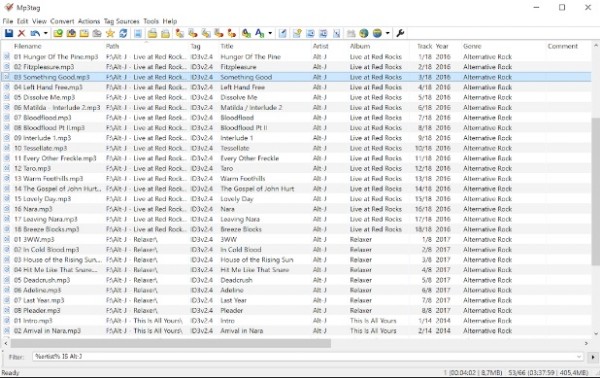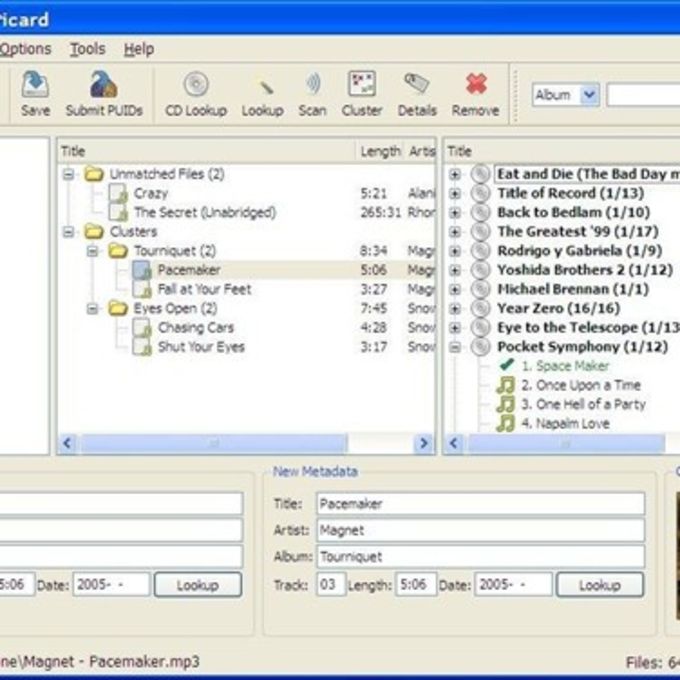- MusicBrainz Picard. MusicBrainz Picard is a cross-platform music tagging application that runs on Linux, Mac OS X, Windows, and even Android. It allows you to clean up and organize your local music by automatically updating artist, album, track information and album art cover for each song.
- Run Musicbrainz Picard. Add a folder containing music files. The application will also search subfolders, so if you'd like, you can add your whole library or large parts of it at once.
MusicBrainz Picard is a cross-platform (Linux/Mac OS X/Windows) application written in Python and is the official MusicBrainz tagger. Picard supports the majority of audio file formats, is capable. MusicBrainz Picard for Mac lies within Lifestyle Tools, more precisely Bookkeeping & Cataloging. The unique ID for this app's bundle is org.musicbrainz.picard. The latest version of the application is supported on Mac OS X 10.4.3 or later. The following versions: 1.3, 1.2 and 1.1 are the most frequently downloaded ones by the program users. The shortcut to remove listings is 'delete'. This key does not exist on Mac portables, causing you to hold down fn-backspace. It can be annoying if you've got a few stray files by an artist, and the matched clusters are under a slightly different spelling.
What is Max?
Max is an application for creating high-quality audio files in various formats, from compact discs or files.
When extracting audio from compact discs, Max offers the maximum in flexibility to ensure the true sound of your CD is faithfully extracted. For pristine discs, Max offers a high-speed ripper with no error correction. For damaged discs, Max can either use its built-in comparison ripper (for drives that cache audio) or the error-correcting power of cdparanoia.
Once the audio is extracted, Max can generate audio in over 20 compressed and uncompressed formats including MP3, Ogg Vorbis, FLAC, AAC, Apple Lossless, Monkey's Audio, WavPack, Speex, AIFF, and WAVE.
If you would like to convert your audio from one format to another, Max can read and write audio files in over 20 compressed and uncompressed formats at almost all sample rates and and in most sample sizes. For many popular formats the artist and album metadata is transferred seamlessly between the old and new files. Max can even split a single audio file into multiple tracks using a cue sheet.
Max leverages open source components and the resources of macOS to provide extremely high-quality output. For example, MP3 encoding is accomplished with LAME, Ogg Vorbis encoding with libVorbis, FLAC encoding with libFLAC, and AAC and Apple Lossless encoding with Core Audio. Many PCM conversions are also possible using Core Audio and libsndfile.
Max is integrated with MusicBrainz to permit automatic retrieval of compact disc information. For MP3, FLAC, Ogg FLAC, Ogg Vorbis, Monkey's Audio, WavPack, AAC and Apple Lossless files Max will write this metadata to the output.
Max allows full control over where output files are placed and what they are named. If desired, Max will even add the encoded files to your iTunes library in a playlist of your choice.
For advanced users, Max allows control over how many threads are used for encoding, what type of error correction is used for audio extraction, and what parameters are used for each of the various encoders.
Max is free software released under the GNU General Public License (GPL).
Screenshots
Partial screenshots of the General preferences and Formats preferences are also available.
Download
The current stable version of Max is 0.9.1, released 29 August 2009.
Max-0.9.1.tar.bz2 (Universal Binary, 5.19 MB)
Max-0.9.1-source.tar.bz2 (Source Code, 10.96 MB)
The current unstable version of Max is 0.9.2b4, built on 18 September 2020.
Max-0.9.2b4.dmg (64-bit Intel, 6.6 MB)
Release Notes
You may view the release notes in HTML.

Known Issues:
- Not all output formats are tagged with metadata

Requirements
Max 0.9.1 requires Mac OS X 10.4 (Tiger) or later.
The unstable version of Max requires Mac OS X 10.7 (Lion) or later.

Help and Support
Need help with Max? The forums are a good place to look for answers to common questions.
Does Max not seem to be working properly? Submit your bug reports using the bug tracker.
Is something missing or does a feature need improvement? Submit your idea or feature request.
Contributing
Would you like to contribute to Max? Willing people are needed to:
- Translate Max into other languages
- Become one of the developers
- Anything at all!
If you are interested please contact Stephen.
Developers
Building Max from source requires the Xcode tools from Apple.
The Max source code repository is hosted on github.
Musicbrainz Picard Alternative Mac
Once Picard has been installed on your system, the next step is to configure it to yourpreferences. The configuration consists of enabling the desired screen sections for display,selecting the desired actions, and setting the various options.
Screen Setup¶
The screen setup is found under the “View” item on the menu bar. To enable the display of anitem, simply check the box for the screen option. The items are:
File Browser
This displays a file browser on the left side of the screen for selectingfiles and directories for processing. Files can be loaded into Picard by dragging and droppingthem to the right panes, double clicking on individual files or by selecting multiple filesand folders and selecting “Load selected files” from the context menu.
Files and directories can also be selected using your system’s file browser by dragging anddropping them onto the Picard application.
Cover Art
This displays the cover art for the currently selected item (track or release)in a window to the right of the tags section of the display. This allows you to select or replacethe cover art saved with the release.
Actions
Musicbrainz Picard Tutorial Mac
This displays the button bar of the actions performed by Picard, located just below the menu bar.
Search
This displays the manual search box to the right of the “Actions” button bar.
Player
This displays the built-in player for playing selected audio files.
Action Options¶
The action options are found under the “Options” item on the menu bar. There are three availableactions that Picard can perform when saving selected music files:
Rename Files
Picard will rename each file in accordance with the naming script.
Move Files
Picard will move files to the target directory in accordance with the naming script.
Fleetwood Mac Musicbrainz
Save Tags

Picard will update the metadata tags in the files in accordance with the specifiedoption settings and tagging scripts.
Musicbrainz Picard For Mac
Option Settings¶
The option settings are found under the “Options ‣ Options…” item on the menu bar. This will opena new window with the option groups listed in a tree format on the left hand side, and the individualsettings on the right hand side. This is where the majority of Picard’s customization is performed.
See also
Musicbrainz Virtual Machine
General Options /Metadata Options /Tag Options /Cover Art Options /File Naming Options /Fingerprinting Options /CD Lookup Options /Plugins Options /User Interface Options /Scripting Options /Advanced Options
